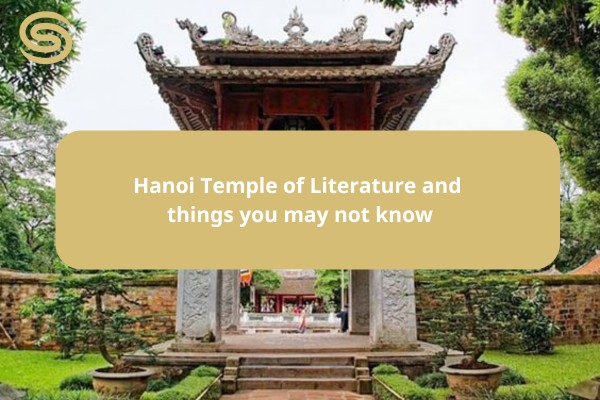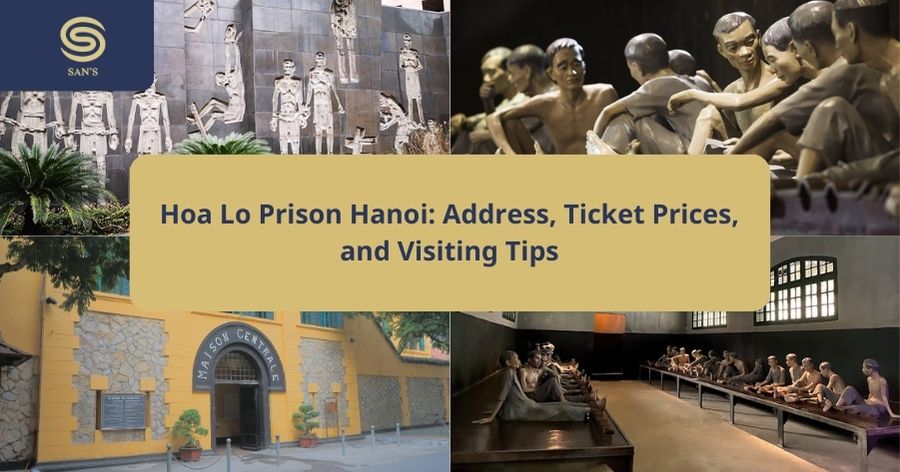The Temple of Literature, known as Văn Miếu in Vietnamese, is one of Hanoi’s most iconic historical and cultural landmarks. Established in 1070 during the Ly Dynasty, this ancient temple is dedicated to Confucius and honors Vietnam’s scholars and educators.
As a travel expert with a decade of experience in Hanoi, Sanhotelseries is excited to guide you through the significance, history, and highlights of the Temple of Literature. This comprehensive article will help you appreciate why it is a must-visit destination in Hanoi.
Historical Significance of the Temple of Literature
The Temple of Literature is not only a symbol of Vietnam’s rich cultural heritage but also the country’s first national university. Initially built as a Confucian temple, it became the Imperial Academy (Quốc Tử Giám) in 1076, serving as an educational institution for the elite. The temple complex has seen various restorations and expansions over the centuries, reflecting the architectural styles of different dynasties.
The Temple of Literature was established to promote the teachings of Confucius and to foster education and scholarship. It became a place where scholars and students from all over the country gathered to study and take the rigorous civil service examinations. These exams were crucial for gaining government positions, and the temple thus played a significant role in shaping Vietnam’s intellectual and administrative elite.
Architectural Marvels and Layout
The Temple of Literature is a stunning example of traditional Vietnamese architecture. The complex is divided into five courtyards, each with its own unique features and significance.
First Courtyard: The Gateway
Entering through the imposing Great Gate (Đại Trung Môn), visitors are greeted by lush greenery and a serene atmosphere. The pathway leads to the first courtyard, where you can admire the majestic entrance gate and the meticulously manicured gardens.

Second Courtyard: The Path of Scholars
The second courtyard, known as the Path of Scholars (Con đường học giả), is flanked by tall trees and ornamental plants. This tranquil area provides a sense of peace and contemplation, allowing visitors to reflect on the temple’s historical significance.

Third Courtyard: The Well of Heavenly Clarity
The third courtyard houses the Well of Heavenly Clarity (Thiên Quang Tỉnh), a rectangular pond that symbolizes purity and wisdom. On either side of the well are the Doctor’s Stelae, stone tablets inscribed with the names of successful candidates from the royal exams. These stelae rest on the backs of stone turtles, representing longevity and endurance.

Fourth Courtyard: The House of Ceremonies
The fourth courtyard is home to the House of Ceremonies (Đại Thành Môn), where Confucian rituals and ceremonies were held. The highlight of this courtyard is the Đại Thành sanctuary, which houses the altar dedicated to Confucius and his disciples. The wooden structure and intricate carvings showcase the exquisite craftsmanship of the period.

Fifth Courtyard: The Imperial Academy
The final courtyard is the site of the Imperial Academy, the first university in Vietnam. This area includes the Thai Hoc House, which serves as a museum displaying historical artifacts, statues of notable scholars, and exhibits on Vietnam’s educational history. The bell tower and drum tower add to the grandeur of this educational space.
Read more: A Unique Travel Experience In Train Street Hanoi

Cultural and Educational Importance
The Temple of Literature has long been a symbol of education, knowledge, and intellectual pursuit in Vietnam. It represents the country’s dedication to learning and its reverence for scholars and teachers. The temple’s historical and cultural significance is celebrated annually with various ceremonies and festivals, such as the Lunar New Year (Tết) and the anniversary of Confucius’s birth.
Annual Events and Festivals
During these celebrations, the temple comes alive with traditional music, dance performances, and ceremonial rites. These events provide a glimpse into Vietnam’s rich cultural heritage and offer visitors a chance to experience the vibrant traditions that have been preserved for centuries.
Legacy of Scholars
The Doctor’s Stelae in the third courtyard commemorate the scholars who passed the royal examinations and contributed to Vietnam’s intellectual and administrative development. These stelae are considered valuable historical records and have been recognized as a UNESCO Memory of the World.

Tips for Visiting the Temple of Literature
To make the most of your visit to the Temple of Literature, consider the following tips:
Best Time to Visit
The best time to visit the Temple of Literature is in the early morning or late afternoon when the weather is cooler, and the crowds are thinner. This will allow you to explore the complex at a leisurely pace and fully appreciate its serene ambiance.
Read more: Best Time to Visit Vietnam: Your Ultimate Travel Guide
What to Wear
Since the Temple of Literature is a place of cultural and historical significance, it is advisable to dress modestly. Comfortable walking shoes are also recommended, as you will be traversing various courtyards and pathways.
Guided Tours
For a deeper understanding of the temple’s history and significance, consider joining a guided tour. Knowledgeable guides can provide valuable insights and anecdotes that enrich your experience.
Photography
The Temple of Literature offers numerous picturesque spots perfect for photography. However, be respectful of the temple’s sanctity and avoid using flash photography inside the sanctuaries.
The Temple of Literature is a testament to Vietnam’s rich cultural and intellectual heritage. As one of Hanoi’s most important historical sites, it offers a fascinating glimpse into the country’s past and its enduring reverence for education and scholarship. Whether you are a history enthusiast, a culture lover, or a curious traveler, a visit to the Temple of Literature is an essential part of exploring Hanoi.
By immersing yourself in the tranquil courtyards, admiring the architectural marvels, and learning about the legacy of Vietnam’s scholars, you will gain a deeper appreciation for the Temple of Literature’s significance. Plan your visit today and discover why this remarkable site continues to inspire and captivate visitors from around the world.
Follow us on Facebook to update the latest travel information daily: San Hotel Series





